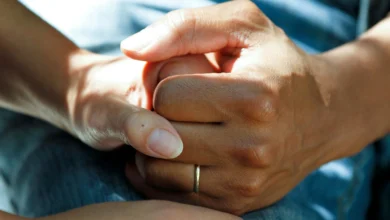
Cycling is a popular sport and form of exercise across all ages. Statistics show that over six million people take part in cycling each year, whether that’s purely for leisure or in a more professional manner. And it’s easy to why, with benefits including:
- Great way to get outdoors and experience local scenery
- Ideal way to commute and reduce emissions
- Low impact on joints
- Excellent way to keep fit
- Can be done as part of a team or solo
- Can be as challenging as you want
However, as with many sports, there are some risks involved, especially if cycling on Britain’s roads. According to Brake, cyclists are one of the most vulnerable groups of road-users with more than 100 cyclists losing their lives each year.
There are also some common injuries that cyclists can suffer from, usually from falls or collisions. This article will explore what these are, the symptoms and treatment options and how to reduce the risk of such injuries.
Road rash
Road rash is very common amongst cyclists, particularly in those who partake in road cycling. It usually occurs after falling off due to high speed or skidding, which results in skin wounds from the friction between the body part and the road surface.
Symptoms include open wounds, grazes and abrasions but, fortunately, these types of injuries generally tend to be fairly minor. Treatment includes cleaning the affected area and applying antiseptic. The wound should be properly cared for to prevent complications such as infection.
In severe cases, medical attention might be required and, if the wound is deep, stitches could be needed.
To prevent road rash, cyclists should be aware of road conditions and refrain from cycling too fast, especially on uneven surfaces.
Concussions and head injuries
Head injuries can result from a collision, a fall, or being struck by a vehicle. These types of injuries can range from minor to very severe and symptoms vary, depending on the impact.
Cyclists suffering from head injuries might experience headaches, dizziness, memory loss, nausea, and in severe cases, loss of consciousness. Treatment should be sought immediately to prevent further complications and it may include hospital observation or specialist care.
Head injuries are a common reason for personal injury claims if the accident was the fault of another road user. The risk of such injuries can be prevented by always wearing a correctly fitted helmet, constantly being aware of surroundings and by drivers taking extra care around cyclists and lowering speed accordingly.
Fractures and dislocations
Fractures and dislocations can also occur due to falls, collisions, or impacts during a cycling accident, depending on the area of the body that is injured.
Symptoms can include swelling, pain and difficulty moving the affected area. Sometimes it’s unclear whether a body part is broken or sprained. If a snapping noise is heard or there is visible deformity, then there’s likely to be a fracture.
Treatment usually involves resting the injury, managing pain and, in some cases, surgery. To reduce the risk, appropriate clothing should be worn and care should be taken over speed.
Spinal Injuries
Spinal injuries can be very severe and even life-threatening. These usually occur due to falls, collisions, or high-impact accidents where the back or neck is injured.
Symptoms vary, depending on the severity, but victims can suffer back or neck pain, inability to move or walk and tingling or numbness. Early intervention is crucial to prevent permanent disability and it’s important to refrain from moving the patient until professional help arrives.
Treatment depends on how serious the spinal injury is, but it can require surgery and long-term rehabilitation including physical therapy.
Facial injuries
Another area of the body that can succumb to cycling injuries is the face. Trauma in this area can be due to falls or impacts which result in lacerations, fractures or even dental injuries such as tooth loss. Depending on the injury, reconstructive surgery might be needed with stitches likely for moderate wounds.
Cycling clearly offers a variety of benefits but it’s important to try and reduce the risk of accidents and injuries whilst out on the road or track. Make sure to stick to the highway code, wear bright coloured clothing and a helmet and maintain the condition of your bike with regular checks and services.







